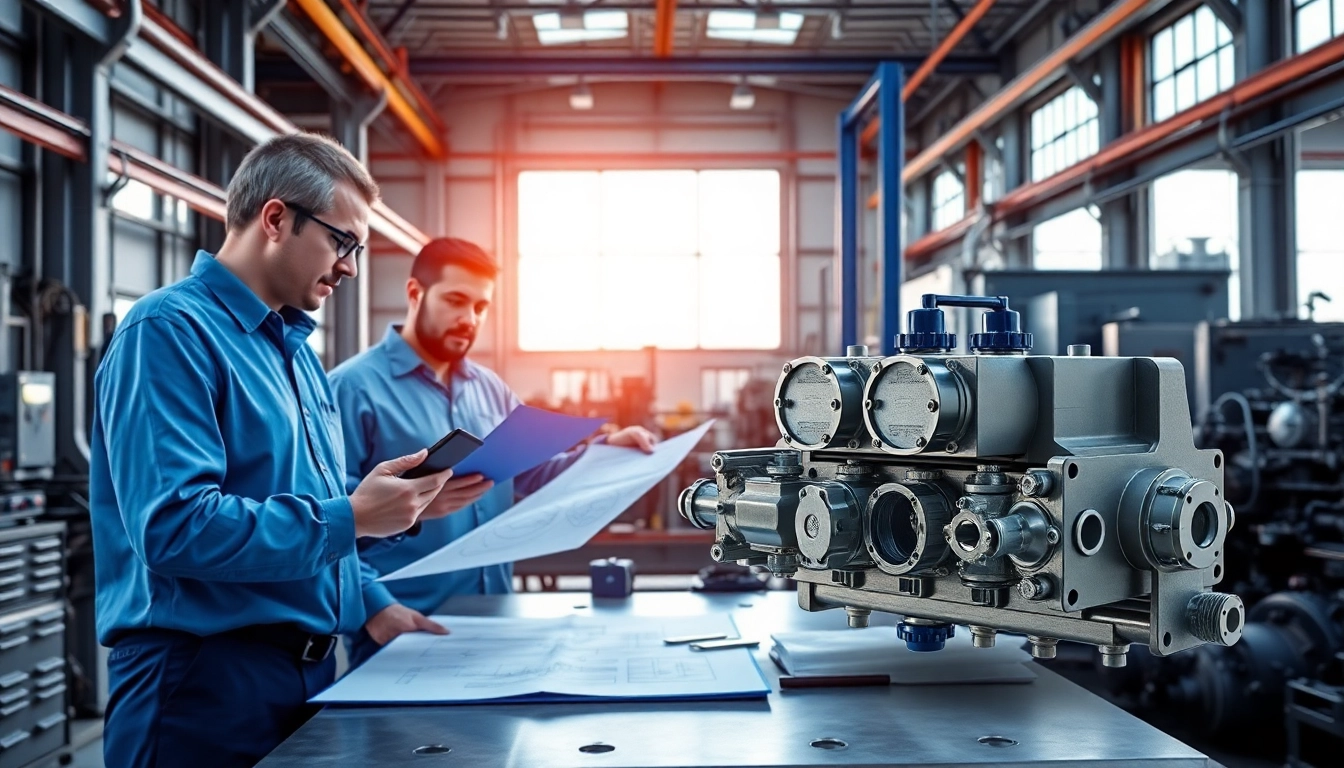Understanding the HM88 Series: Features and Applications
The HM88 Series represents a significant advancement in manifold technology, specifically tailored for precision pressure measurement applications. This innovative series is designed for efficiency and reliability, making it suitable for a wide range of industries, including oil and gas, chemical processing, and water treatment. When exploring options, hm88 provides comprehensive insights into these advanced systems, revealing their potential to enhance operational efficiency and reduce costs.
Overview of HM88 Technology
The HM88 Series is engineered with state-of-the-art materials and designs to ensure maximal durability and functionality. Each manifold features three-valve configurations that allow for precise control and measurement of differential pressure. Constructed from high-grade stainless steel and equipped with advanced sealing mechanisms, these manifolds are designed to withstand high pressure and temperature fluctuations. Notably, the HM88 incorporates a unique flow path that minimizes turbulence and increases measurement accuracy.
Primary Applications in Industry
The versatility of the HM88 Series makes it ideal for various applications. In the oil and gas sector, these manifolds are crucial for monitoring pressure in pipelines and processing facilities. The chemical industry uses HM88 systems for various processes, including reactor control and fluid management, while water treatment facilities integrate these manifolds to monitor filtration pressures effectively. Their robust design ensures they can handle harsh environments and maintain reliability over extended periods.
Comparative Analysis with Competitor Products
When analyzing the HM88 Series against competitors, such as the offerings from Hex Valve and other manufacturers, several key differences emerge. While many competitor products provide similar pressure measurement capabilities, the HM88 Series stands out due to its superior material quality and customizable configurations. Additionally, the ease of installation and maintenance makes it a preferred choice for many engineers, ensuring less downtime during operations.
Installation Guidelines for HM88 Manifolds
Installing an HM88 manifold requires careful planning and attention to detail, as improper installation can lead to performance issues and safety hazards. This section outlines the essential steps to ensure a successful setup, making it easier for professionals to integrate the system into existing infrastructures.
Step-by-Step Installation Process
- Preparation: Ensure all necessary tools and safety equipment are available. Review system specifications and installation manuals before proceeding.
- Mounting: Secure the manifold to a stable surface using appropriate mounting brackets and hardware. Ensure alignment with piping systems to prevent undue stress.
- Connection: Attach the manifold to the corresponding pressure lines, ensuring all connections are tight and leak-free. Utilize Teflon tape or sealant as necessary.
- Calibration: Once installed, calibrate the system according to manufacturer specifications. This step is crucial for accurate pressure readings.
- Testing: Conduct operational tests to verify that the manifold functions correctly under various pressure conditions.
Common Installation Challenges and Solutions
While installing HM88 manifolds is straightforward, several common challenges may arise. Misalignment of piping can create stress points, leading to potential leaks. To mitigate this, always double-check the alignment before securing connections. Additionally, ensure that all seals and fittings are compatible and inspected for damage prior to installation.
Best Practices for Ensuring Optimal Performance
To ensure the long-term performance of HM88 manifolds, consider the following best practices:
- Regularly inspect all connections and seals for signs of wear or damage.
- Implement routine calibration checks to maintain measurement accuracy.
- Document installation parameters and maintenance activities for future reference.
- Train personnel on proper handling and operational procedures to prevent mishandling.
Maintenance Strategies for HM88 Systems
Regular maintenance is vital to the longevity and performance of HM88 manifolds. This section outlines effective strategies to keep these systems running smoothly and efficiently.
Routine Maintenance Checklist
- Inspect the manifold for signs of corrosion or leaks.
- Verify calibration settings against baseline measurements.
- Clean connection points to prevent buildup of debris or contaminants.
- Check and replace seals as needed to ensure system integrity.
- Review operational data for any anomalies that may indicate potential issues.
Signs of Wear: When to Replace Parts
Recognizing when to replace parts of the HM88 manifold is crucial for ensuring reliability. Common signs of wear include:
- Inconsistent pressure readings that deviate from expected ranges.
- Visible corrosion or physical damage to valves and fittings.
- Frequent need for recalibration or adjustments.
- Leakage at connection points or around seals.
Technological Upgrades in HM88 Maintenance
Recent advancements have introduced several technological upgrades that facilitate more efficient maintenance of HM88 systems. Digital monitoring systems can now provide real-time data on manifold performance, allowing for predictive maintenance strategies. Implementing these technologies can enhance operational efficiency and minimize unplanned downtimes.
Industry Trends Impacting HM88: What to Expect in 2025
The landscape of manifold technology is evolving rapidly. Understanding current trends will help stakeholders prepare for future developments in HM88 systems.
Emerging Technologies in Manifold Design
As industries seek greater efficiency and reliability, manifold designs are incorporating advanced materials and smart technologies. Innovations such as integrated sensors for real-time monitoring and automation capabilities are becoming commonplace. These enhancements lead to improved precision and reduced human error.
Market Demand and User Preferences
In 2025, market demand will likely shift towards more customized solutions. Users are looking for manifolds that can adapt to specific application requirements, including variable pressure ranges and bespoke configurations. This trend is pushing manufacturers to enhance their flexibility in product offerings.
Predictions for Future Innovations
Looking ahead, we can anticipate several key innovations in the HM88 Series, including the integration of Internet of Things (IoT) technologies for enhanced data analytics and predictive maintenance. These advancements will enable users to optimize performance and reduce operational costs significantly.
Case Studies: Success Stories Utilizing HM88
Real-world applications of the HM88 Series highlight its effectiveness across various sectors. These case studies illustrate the manifold’s impact on operational efficiency and process improvement.
Case Study 1: Engineering Solutions in Manufacturing
A notable case involved a manufacturing facility that implemented HM88 manifolds for controlling hydraulic systems. By switching to HM88, the facility experienced a 25% reduction in downtime due to fewer leaks and improved pressure regulation. This transition resulted in substantial cost savings and enhanced production output.
Case Study 2: Enhancements in Process Efficiency
In another instance, a chemical processing plant adopted the HM88 Series to monitor and manage pressure across several reactors. The precision of the HM88 systems allowed for better control over reaction conditions, leading to a 15% increase in yield and a notable decrease in raw material waste.
What We Can Learn from HM88 Implementations
These case studies demonstrate that integrating HM88 systems can yield significant operational benefits. Companies looking to enhance performance and reduce costs should consider the reliability and efficiency of the HM88 Series as a pivotal component of their systems.


